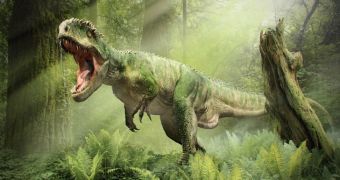A recent investigation whose findings are detailed in today's issue of the journal Science has revealed that dinosaurs were neither warm- nor cold-blooded. On the contrary, researchers say that they were in-betweeners.
This is despite the fact that, ever since the first dinosaur fossils were discovered, these ancient beasts have been classified as reptiles and therefore assumed to have been cold-blooded animals, Nature explains.
In their paper in the journal Science, the scientists behind this research project explain that cold-blooded animals, otherwise known as ectotherms, change their body temperature depending on environmental conditions.
Warm-blooded creatures, or endotherms, on the other hand, are able to control their own body temperature regardless of the environment they are in, and usually keep it at a safe, constant level.
Unlike cold-blooded animals, in-betweeners have the ability to burn energy from within in order to regulate their body temperature. However, unlike endotherms, they do not strive to keep this temperature constant.
What's interesting is that, according to biologist John Grady with the University of New Mexico, in-betweeners, whose official name is mesotherms, still exist in this day and age. Thus, tuna and leatherback turtles are classified as mesotherms.
John Grady and fellow researchers suspect that the fact that dinosaurs were neither warm-blooded nor cold-blooded but in-betweeners made it easier for them to populate the globe and thrive in fairly harsh environments.
This is because, unlike cold-blooded animals such as lizards and crocodiles, they did not have a slow metabolism and were not what some would call sluggish. As detailed in the journal Science, this means that they would have had no trouble moving about a certain region.
Then again, the fact that they were not all that preoccupied with keeping a constant body temperature and their metabolism was not hyperactive made it possible to survive on less food than a mammal of a similar size would have needed in order to stay alive and develop.
“The fact that dinosaurs were pretty much dominant for 130 million years speaks to the fact that they had some special things going for them,” the University of New Mexico biologist said in a statement.
“For instance, it is doubtful that a lion the size of T. rex would be able to eat enough wildebeests or elephants without starving to death. With their lower food demands, however, a real T. rex was able to get by just fine,” the researcher added, as cited by Live Science.
The claim that dinosaurs were in-betweeners in terms of body temperature is based on information obtained while investigating the metabolism of extinct animals. In order to draw conclusions concerning the metabolism of these ancient beasts, researchers looked at the rates at which their bones grew.

 14 DAY TRIAL //
14 DAY TRIAL //